History of Pride
The Early Years of Pride
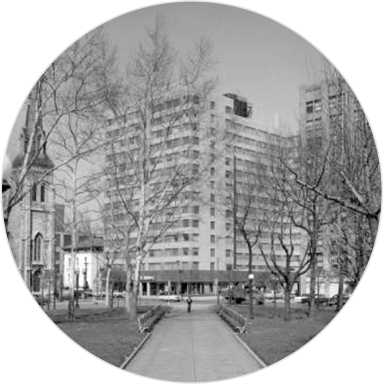
The Essex House Hotel
(Source: Indiana Historical Society)
The history of LGBTQ Pride in Indianapolis did not begin with visibility from the public eye. There were no safe gay bars or places for the LGBTQ community in Indianapolis. In 1981, the first Pride event was a dinner at the now gone, Essex House Hotel where many of the attendees wore masks upon entering the hotel so as not to be seen. Through the mid-1980’s, Justice, Inc., a local social services organization, was one of the early organizers holding a variety of indoor banquets, brunches and events featuring speakers. These events were held at the Essex, the Atkinson (where the Hyatt is today), the Hilton on The Circle (now the downtown Sheraton Hotel), and where “Pride” was held in 1987, Riley’s Pub, 650 N. Alabama.
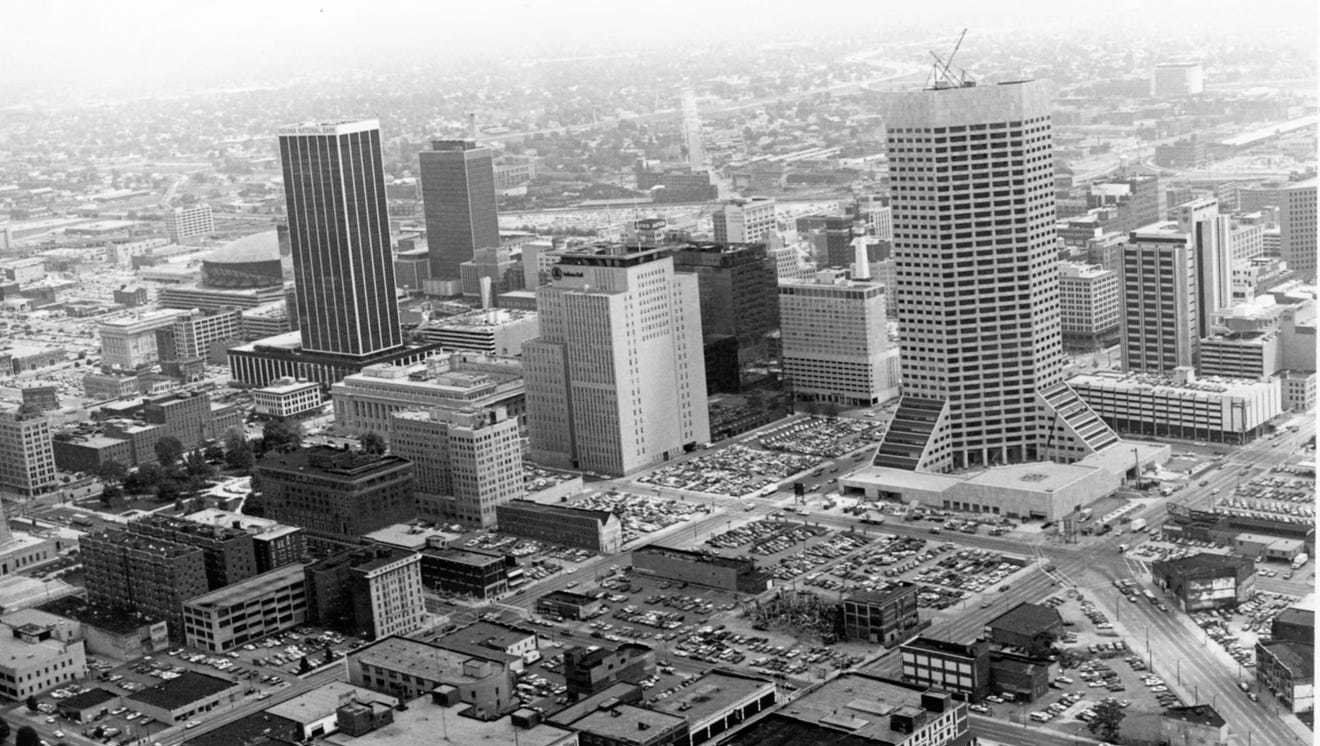
1982 – 1983
(Source: Indiana Historical Society)
In 1982, The Greater Indianapolis Gay Business Association (GIGBA) hosted another LGBTQ community event, a Labor Day Picnic in Westlake Park. Over 500 people attended this event, making it the largest LGBTQ event during the early 1980’s. In 1983, attendance doubled to nearly 1,000 people. This event continued to grow until they ended in the early 1990’s. The growth in attendance showed the need for community building and an annual celebration for the LGBTQ community. These early community organized events provide inspiration for the later Indy Pride Inc.
Pride “Comes Out of the Closet”

1983–84
(Source: Coby Palmer)
On June 26, 1988, Justice Inc. expanded the annual Pride celebration. The organization hosted a festival at the once known, Indianapolis Sports Center. For the first time, an LGBTQ event was not hosted in another restaurant, bar or pub. However, it was hosted in a public space where the LGBTQ community of Indianapolis could be out and visible. The festival had 175 people attend and included a yard sale, church services, and roller skating party. The following year, in 1989, Justice Inc., hosted the Pride Festival where the Labor Day picnics were held, in Westlake Park. The 1989 festival consisted of a picnic and entertainment with attendance growing to 1000 people.

1990 – 1991
(Source: Indiana Historical Society)
After 10 years of Pride events in Indianapolis, Justice Inc. held the first Celebration on Monument Circle in 1990, extending Pride’s invitation as a more public event and less of private function. This historic and inaugural event became the largest event centered on the LGBT community with 3000 attendees In 1991, Pride was held once again on the Circle again. Then, the festival moved to University Park in 1992-1994.
The Founding of Indy Pride, Inc.
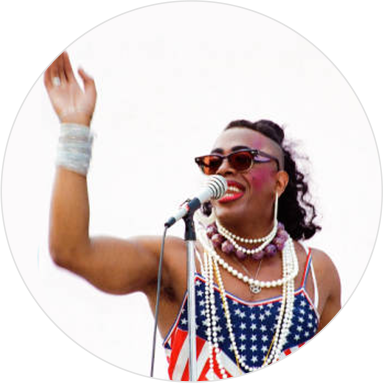
Indy Pride Celebration 1995
(Source: Indiana Historical Society)
In 1995, Indy Pride, Inc. was established as an independent organization governing the annual Celebration on Monument Circle. Moving the location of the festival to the canal and having the festival in the fall, instead of the summer were just some of the various changes the organization made. The organization embraced major changes, especially in moving the event to the Canal in the fall. The event also had an admission fee for some events which resulted in over $10,000 in debt and the future of the newly established organization became unpromising.

1996 – 1999
(Source: Indiana Historical Society)
However, two different organizations, The Word and Justice, Inc., hosted the traditional event at University Park/Veterans Plaza with all proceeds going to Justice, Inc. With financial help, Indy Pride Inc., reorganized under the leadership of Linda Batchelor-Ballew, held a second event in the fall of ‘96 on Talbott Street. Between 1996 and 1999 both Pride events co-existed and worked together. Indy Pride paid back its debt while The Word paid for the June events and donated the profits to Justice, Inc.
Indy Pride Inc. Flourishes

Indy Pride 1997
(Source: Indiana Historical Society)
In 1997, Indy Pride Inc., became a tax-exempt organization and established its first office in Fountain Square. Fully recovered from its large debt, they began negotiations in 1999 with Justice Inc. to combine the many Pride events. Indy Pride Inc. also began an annual scholarship program and an annual Community Thanksgiving Dinner. In 2001-2003, under the leadership of Ivan Howard, more events were created and the Indy Pride, Inc., event was moved to Massachusetts Avenue as a Street Fayre. Another event that was created was a picnic held the Sunday after the Street Fayre at Eagle Creek Park
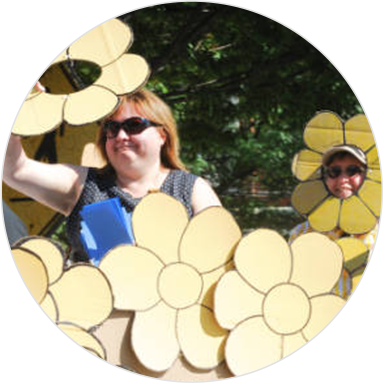
2002 – 2009
(Source: Indiana Historical Society)
In 2003, under Gary Brackett’s leadership, Indy Pride Inc. ended the Street Fayre on Massachusetts Avenue and combined the two Pride events into one festival that took place at University Park and held in mid-June. In 2002, 6,000 people attended the festival. In 2003, attendance increased to 10,000 people. In 2004, the Indy Pride Inc. decided that the Pride Festival would annually be celebrated on the second Saturday of June. In 2002 the organization introduced the Cadillac Barbie Pride Parade which featured a float, an antique truck, a few drag queens, some antique cars, and several walking groups. The entire parade lasted 15 minutes. The parade began at the corner of Massachusetts Avenue and College Avenue, the processioners of the parade proceeded down to Vermont Street and finished at the Festival held in University Park. For the next four years, until 2009, the Festival continued to prosper in University Park. Attendance was estimated at 45,000 people and 170 vendor booths.
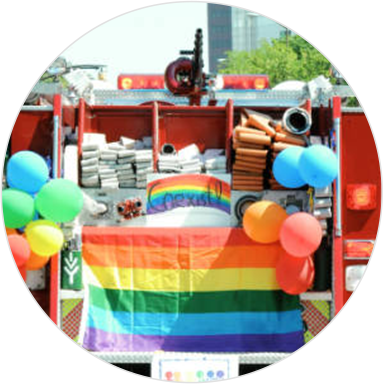
2010 – 2011
(Source: Indiana Historical Society)
In 2010, Indy Pride Inc.’s Board of Directors made the decision to move the Festival two blocks north of University Park to the American Legion Mall. Moving the location to the Mall allowed more room for growth. Changing the location of the festival wasn’t the only changes Indy Pride Inc. had seen. The organization that the festival was rebranded to Circle City IN Pride, in an effort to trademark the Festival beyond the “Indy Pride” name. The Circle City IN Pride Festival with over 55,000 attendees and 190 vendor booths. In 2011, the parade was also named the “Cadillac Barbie Pride Parade.” The name change was made to honor Gary Brackett, a resident of Indianapolis who was one of the president of Indy Pride Inc. Brackett is also known for his work with the Bag Ladies. Along with the addition of the parade in 2011, the organization expanded the space of the festival by including the Veterans Memorial Plaza.

2012 – 2020
(Source: Indiana Historical Society)
In 2012, the Circle City IN Pride festival stretched further than three city blocks, with more than 300 vendors, and over 80,000 LGBTQ people and allies in attendance. With the growth of attendance and vendors many additions have been made to the Circle City IN Pride festival and “Cadillac Barbie Pride Parade,” such as expanding from one stage to adding another stage, and a designated family friendly entertainment area.. The parade continued to grow. In 2012 the parade went over two hours, and became one of the largest parades, in both number of floats and attendance, in Indianapolis’s history. In 2020, the parade was named “Indy Pride Parade”.
Establishing an Indianapolis Tradition
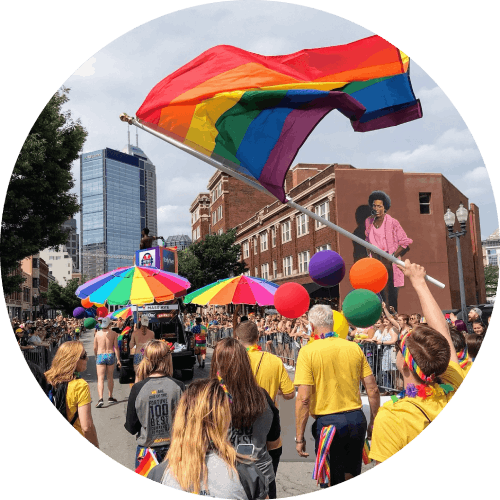
2021
(Source: Indiana Historical Society)
Throughout the past 5 years, the festival has presented several platforms for entertainment, opportunities, and community growth for the LGBTQ community. Several other local organizations and businesses that cater to the LGBTQ community, such as Indiana Youth Group and the Damien Center, have sponsored booths at the Circle City IN Pride festival. Food vendors, and other businesses surrounded the festival to display support and market to attendees. The centerpiece of the Circle City IN Pride festival is the main stage that hosts local and national talents providing entertainment for the festival crowd. Performers range from local musicians and singers, the Pride of Indy Band, national recording artists, drag performances, DJs and speeches. Indy Pride has hosted names on its main stage such as RuPaul who performed at the close of the festival in 2006, Kat DeLuna who performed in 2009, Candace Gingrich, who in 2007, gave a speech for the Human Rights Campaign on same-sex marriage issues.
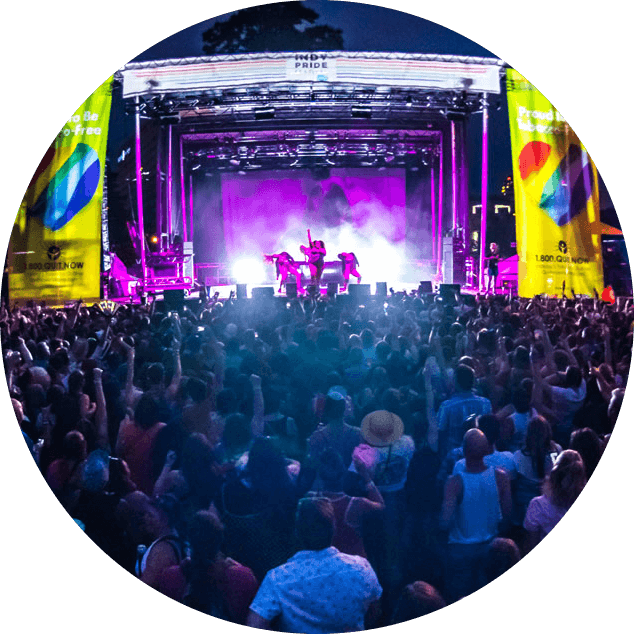
2022
(Source: Indiana Historical Society)
In the years since Pride first “came out of the closet,” the exposure has created a massive change in the society of the city of Indianapolis and the state of Indiana. The battle is not won until everyone is equal but the Indy Pride Festival and the Indy Pride Parade are Indiana’s symbol of a growing acceptance in our cultures.